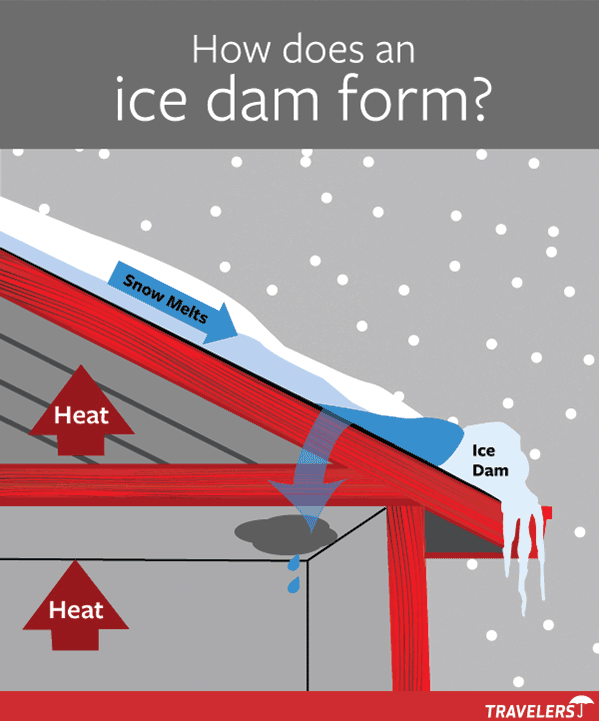Spring Thaw & Ice Damming
Warming temperatures in the Hamilton and surrounding community that began Sunday and were forecast to continue for the week could contribute to ice damming, a condition that can result in expensive water damage to homes, suggests a local roofing company.
Prevention is key to saving money and protecting homes and businesses.
As of Monday morning, Environment Canada was forecasting temperatures in Hamilton this week ranging from a low of 2 degrees Celsius to 9 C, with mostly sunny conditions and rain forecast for just one day.

Ice dams are partly the result of heat that escapes from inside a home into the attic, which then warms the roof during the winter months. When combined with the sun and fluctuating temperatures, this causes the snow on the roof to partially melt and then accumulate at the edge of the roof or overhang, and once eavestroughs are full, the ice begins to expand under the shingles, causing them to separate.
Ice dams are hardly a new concern. Saskatchewan, for example, saw a major increase in ice dam claims in 2013. SGI Canada reported in early 2014 that the insurer had received 2,600 ice dam claims that year – compared to just 28 claims reported in 2012 – that cost $21.7 million.
It’s very important to ensure ice dam coverage is in place before a loss occurs, since coverage is not automatically included with all home insurance policies.
Roofers recommend that homeowners check for telltale warning signs of ice dams, such as sheets of ice along shingles, icicles along the edge of eavestroughs and frost accumulation in attics. Before this ice melts, homeowners are urged to call a trusted, experienced and certified roofing professional with the proper safety equipment visit their homes.

Damage from ice dams, however, is almost entirely preventable, Barat suggests. It is recommended homeowners do the following:
• have a roofing inspection to ensure the attic is well-ventilated;
• ensure the attic is properly insulated, in addition to the attic floor, to minimize heat from rising from the house and causing snow to melt;
• install an ice and water shield membrane under the roof covering at least six feet from the eavestroughs line;
• clean out eavestroughs regularly to remove leaves so that melting snow and ice can flow; and
• look in the attic for signs of frost, ice and ice around the head of nails on the plywood roof sheeting.
Integrity Roofers notes that people often forget that their roof is not just about the shingles, it is an entire system that involves ventilation, insulation and the external materials that must all work together.
A statement issued last fall by the Insurance Information Institute in the United States pointed out that water damage and freezing account for almost 22% of all homeowners insurance claims south of the border. The average claim amounts to US$4,024.
[video align="center" aspect_ratio="16:9" width="90" autoplay="0"]http://youtu.be/HGWgfYr_6T4[/video]